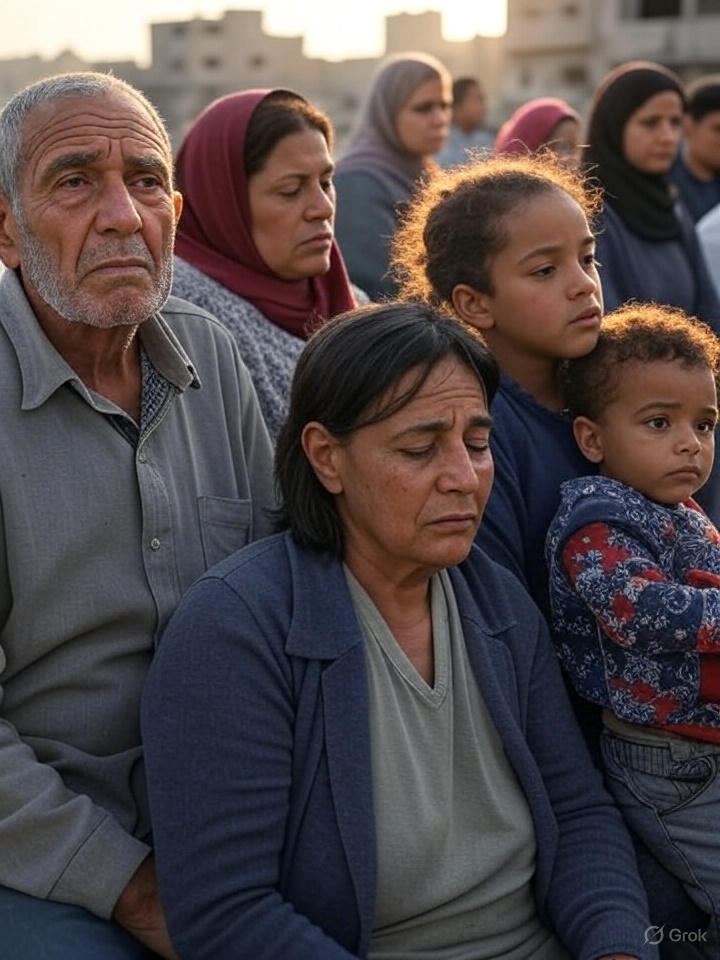What’s happening and why
1. Desperate hunger and rising malnutrition
- A recent WFP assessment reports that roughly one third of Gaza population is going multiple days without food a clear sign of mass deprivation(Globedge).
- 90,000 women and children are in urgent need of nutritional treatment. The number suffering from catastrophic hunger (IPC Phase 5) stands at about 470,000 people.
2. Starvation-related fatalities mount
- Gaza’s health ministry reports 122 starvation-related deaths, including around 83 children, with nine additional deaths in the past 24 hours.
- At least 1,000 Palestinians have been killed attempting to reach aid distribution sites since May, often due to violence and chaos near food convoys.
3. Malnutrition crisis worsens
- Médecins Sans Frontières (MSF) reports that severe malnutrition in children under five has tripled in just two weeks, with one in four children or pregnant/breastfeeding women requiring urgent care.(The Guardian)
- Even healthcare workers and journalists in Gaza are suffering severe weight loss and hunger while documenting the crisis.(TIME)
Causes of the crisis
Blockaded aid channels
- Gaza remains under a tightened Israeli blockade strict limits on aid access, controlled crossings, and militarized distribution have drastically reduced supply and mobility.(World Food Programme)
- Israel and the U.S. back a new Gaza Humanitarian Foundation (GHF) system for aid distribution, but experts say it has failed to meet basic humanitarian principles, often exposing civilians to danger.(The Washington Post)
Destruction of essential infrastructure
- Airstrikes have damaged or destroyed bakeries, food stores, and farms across Gaza some key food production ceased by early 2024.(Wikipedia)
- Most hospitals and clinics struggle as utilities fail, limiting treatment capacity for malnutrition a potent combination fueling mortality.(Wikipedia, Wikipedia)
Economic collapse and price surge
- Food and cooking fuel prices have soared wheat flour now costs reportedly 3,000 times its pre war price, making basic sustenance unaffordable.(World Food Programme)
- With growing inflation and a frozen economy, families are selling belongings and engaging in bartering just to survive.(Financial Times)
What international response looks like
- WFP has delivered over 18,000 metric tons of food since late May but distribution reached only a fraction of the population, with just 24,600 people directly served in recent distributions.(World Food Programme)
- The agency is prepared to deliver 2,000 MT of food daily if provided safe access, faster entry process, and civilian protection currently unmet demands.(World Food Programme)
- Governments including the UK, France, and Germany have called for an immediate ceasefire, unrestricted aid access, and blame Israel’s restrictions for fueling the crisis.(The Guardian)
- UN Secretary General António Guterres and Médecins Sans Frontières warn the international community is failing morally as Gaza approaches famine.(The Guardian)

Broader implications
Famine risk is very real
- While famine has not been officially declared under IPC standards, many experts believe Gaza already meets the criteria. With conflict ongoing and aid insufficient, famine is highly likely unless conditions drastically change.(AP News, Vox, Wikipedia)
Humanitarian volumes blocked
- Israeli restrictions and GHF’s militarized approach have reduced UN led distribution at least 6,000 aid trucks remain blocked, according to UN agencies.(World Food Programme)
Mortality mounting among vulnerable groups
- Women, children, and infants are especially at risk. Maternal malnutrition causes miscarriage, premature births, and infant mortality. Doctors report rising rates of underweight births and death from dehydration.(The Guardian, Wikipedia)
Summary
- Nearly one-third of Gaza’s population has gone days without food, while catastrophic hunger afflicts nearly 470,000 individuals, including 90,000 women and children needing urgent help.
- At least 122 starvation‑related deaths have been recorded plus over 1,000 killed seeking aid amid dangerous conditions at distribution sites.
- Malnutrition levels are soaring, health services are crumbling, and food supply infrastructure is destroyed or immobilized.
- Aid delivery remains far too limited. Critics warn Gaza is on the brink or already in the world’s most severe famine, yet international aid is restricted and subject to militarized oversight.

